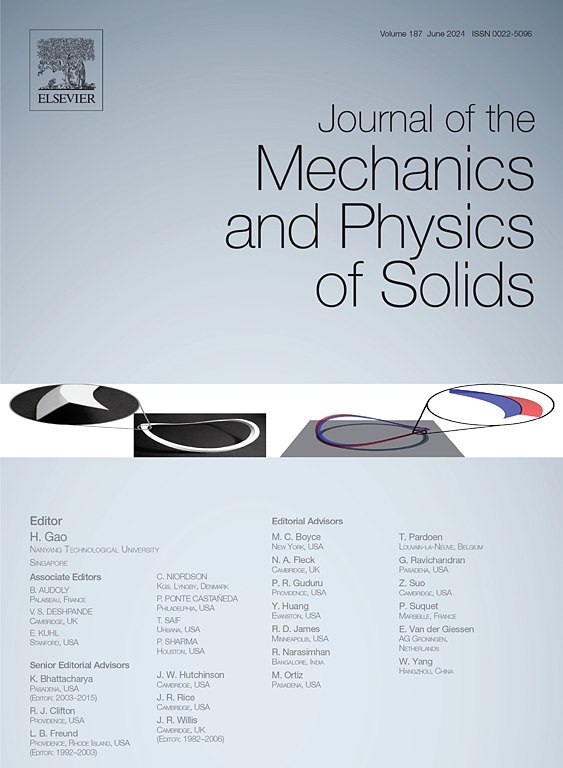A constitutive model of monodomain liquid crystal elastomers with the thermal-mechanical-nematic order coupling
IF 5
2区 工程技术
Q2 MATERIALS SCIENCE, MULTIDISCIPLINARY
引用次数: 0
Abstract
Liquid crystal elastomers (LCEs) are a distinctive class of materials that combine the transformative properties of liquid crystals with the flexibility of elastomers, enabling significant reversible deformations in response to various external stimuli. This paper investigates the intricate thermal-mechanical-nematic order coupling behaviors of monodomain nematic LCEs. We propose an enhanced constitutive model that merges the established neo-classical theory with the Landau–de Gennes theory, thereby improving the model's ability to account for temperature influences effectively. Additionally, we use the concept of semi-soft elastic energy and consider the anisotropic behaviors associated with the orientations of the nematic directors, aiming to more accurately capture the nuances of their soft elastic and anisotropic properties under varied loading conditions. The present model has been numerically discretized and implemented in the commercial finite element software, facilitating precise simulations of the stress-stretch relationships and the anisotropic mechanical behaviors associated with specific director orientations. Constitutive simulations have shown a high degree of accuracy, aligning well with experimental data, especially in predicting the complex mechanical behaviors of LCEs under different thermal-mechanical conditions. Our results elucidate the necking observed during uniaxial loading and the unique director evolution during biaxial loading. Additionally, we identify a unique hole-size insensitivity in perforated LCE sheets, attributed to the compensation between anisotropic reinforcement and director orientations. These findings underscore the potential of advanced modeling techniques in exploring the dynamic properties of LCEs, paving the way for applications in artificial muscles, soft robotics, and responsive biomedical devices.
求助全文
约1分钟内获得全文
求助全文
来源期刊
CiteScore
9.80
自引率
9.40%
发文量
276
审稿时长
52 days
期刊介绍:
The aim of Journal of The Mechanics and Physics of Solids is to publish research of the highest quality and of lasting significance on the mechanics of solids. The scope is broad, from fundamental concepts in mechanics to the analysis of novel phenomena and applications. Solids are interpreted broadly to include both hard and soft materials as well as natural and synthetic structures. The approach can be theoretical, experimental or computational.This research activity sits within engineering science and the allied areas of applied mathematics, materials science, bio-mechanics, applied physics, and geophysics.
The Journal was founded in 1952 by Rodney Hill, who was its Editor-in-Chief until 1968. The topics of interest to the Journal evolve with developments in the subject but its basic ethos remains the same: to publish research of the highest quality relating to the mechanics of solids. Thus, emphasis is placed on the development of fundamental concepts of mechanics and novel applications of these concepts based on theoretical, experimental or computational approaches, drawing upon the various branches of engineering science and the allied areas within applied mathematics, materials science, structural engineering, applied physics, and geophysics.
The main purpose of the Journal is to foster scientific understanding of the processes of deformation and mechanical failure of all solid materials, both technological and natural, and the connections between these processes and their underlying physical mechanisms. In this sense, the content of the Journal should reflect the current state of the discipline in analysis, experimental observation, and numerical simulation. In the interest of achieving this goal, authors are encouraged to consider the significance of their contributions for the field of mechanics and the implications of their results, in addition to describing the details of their work.

 求助内容:
求助内容: 应助结果提醒方式:
应助结果提醒方式:


